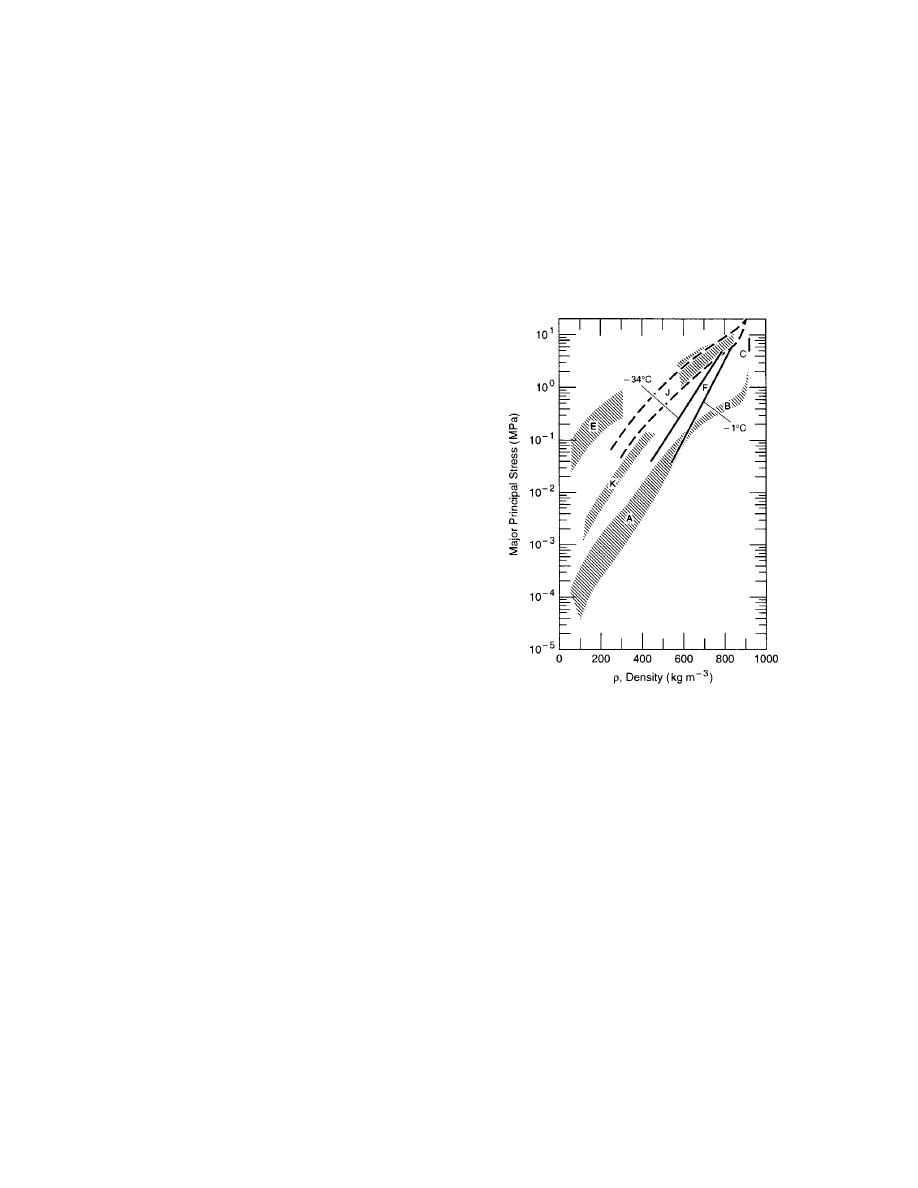
addition, the influence of aging of the samples
CONFINED COMPRESSION
was clearly shown by the increase in the stress at
(UNIAXIAL DEFORMATION)
any strain as the samples aged. Abele and Gow
AND BEARING STRENGTH TESTS
(1975, 1976) did not find any influence of strain
rate in the range from about 2 103 s1 to 11 s1,
The relationship between the major principal
stress and the density in uniaxial strain has been
but their data do show the same trend of the
of concern in the subject of snow mechanics be-
influence of aging as those of Yong and Metaxas
cause it simulates, to some extent, the process of
(1985).
densification of natural snowpacks and is impor-
tant in considerations of the bearing strength of
snowpacks. Bader (1962a) included a discussion
of the data from plate bearing tests by Landauer
and Royse (1956), Yosida et al. (1957) and Bucher
and Roch (1946) as they relate to this subject.
Mellor (1964) discussed some of the material on
plate indentation, and treated the combined sub-
ject thoroughly in Mellor (1975). Experimental
work has since been done on the stress vs. density
relationship by Abele and Gow (1975, 1976) (re-
viewed in Mellor 1977) and Yong and Metaxas
(1985).
Mellor (1975) produced a plot of maximum
principal stress vs. density for the range of densi-
ties from less than 100 kg/m3 to 900 kg/m3 (the
comparable stress range is from about 0.1 kPa to 1
MPa) by combining 1) densification curves from
numerous unspecified locations, 2) miscellaneous
data on the compression of ice and firn, 3) the
data which had appeared in Bader (1962a), 4)
shock experiments and 5) new data by Kinosita
(1967). Data from static loading experiments cover
a significant range of the density, which was ex-
Figure B7. Stress vs. snow density data from
panded further in the work of Abele and Gow
various sources from Mellor (1975) as modi-
(1975, 1976). Those authors included the effects of
fied by Abele and Gow (1976). Data fields are
initial density, temperature, strain rate and aging.
(A) natural densification of snow at 1 to 48C,
A plot from the latter paper which shows the
(B) Slow natural compression of dense firn and
present state of the data is given in Figure B7. In a
porous ice (from depth/density curves for polar ice
later work, Yong and Metaxas (1985) studied the
caps), (C) Slow compression of solid ice, (E) Calcu-
effect of strain rate and aging on the deformation
lated values for plane wave impact at 2040 m s1.
of snow in confined compression and direct shear.
(F) Hugoniot data for explosively generated shock
The range of strain rates they used (about 3 103
waves (impact velocities 1 to 12 m s1) at 7 to
to 1 102 s1) overlapped part of the range of
18C; (J) Compression at approximately constant
rates used by Abele and Gow (1975), so the re-
strain rate e ≈ 104 s1 at 7 to 18C (Kinosita
sults may be comparable. The data in Yong and
1967); (K) Compression in uniaxial strain with
Metaxas (1985) showed the effect of strain rate,
incremental loading to collapse, 2 to 3C (Bucher
and Roch 1946). Heavy lines labeled 1C and
with the stress at a strain of 35% elevated at the
lower rates; however, the differences may not be
significant for strain less than about 2025%. In
Gow (1975, 1976).
30



 Previous Page
Previous Page
